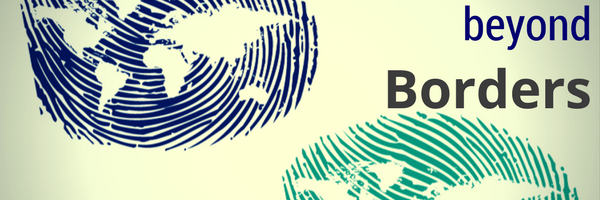
|
|
|
|
Culture is Like a River... Through the years, there have been several theories used to describe culture. Since culture is so hard to describe, having a theory to try to explain it makes sense, but how much sense does it actually make when you are living in the midst of a new culture? Do you actually remember to apply the theories? Below I describe two well known theories and add my own thoughts about culture. I hope you will find it helpful in your global work. Culture is like an Iceberg: The top visible 10% of the iceberg is what one sees when in a new environment. The way people dress, the way they talk, what they eat, the cars they drive, the buildings they live in, etc. The bottom half of the iceberg states that 90% of the iceberg is not visible. You can't see how people think, what they are feeling, how they process information, how they learn, etc. This theory is very popular, and does help some individuals grasp the concept, but doesn’t allow you to experience culture in the moment. It’s too mechanical. Culture is not a "thing." It is a state of being where groups of people and individuals act on their beliefs and those beliefs are what govern their behavior. The second theory is Culture is like an onion. To effectively understand it, imagine an onion, and like an onion, you peel each layer of the skin, which brings you deeper into the core of the onion. Comparing culture to an onion insinuates that for you to understand others you must peel away at layers of their personalities to get a clearer understanding of who they are. People are not like that, and you are not a psychiatrist, you are a global leader and you can’t peel away people’s personalities to get to the core of who they are. It takes time to get understand your co-workers, colleagues, clients, business partners, etc., that is because people are growing and developing all the time, they are not fixed. Their behaviors can’t be peeled away. These two popular theories make culture seem mysterious, dangerous and even complicated. Understanding different cultures is not an easy process, but it is also not as black and white as these two popular theories suggest. In my opinion, culture is about feelings, perceptions, attitudes and behavioral processes coupled with action, all of which allow the existence of what is, and change of what could be, to surface. The collective mentalities of a society are what govern their culture. Understanding culture and cultural differences or similarities, for that matter, is about suspending your own judgments about how you think things should be and to look at what really exists, what is real, right in front of you. This type of understanding takes time to develop. As you spend time in a new country and allow yourself to become submerged in a new culture, the invisible things that were not apparent in the beginning start to surface. What seemed strange, different, mysterious or even dangerous is no longer there. This mental shift is what allows you as a leader to begin seeing things with a fresh perspective; it is what gives you the ability to lead effectively in any surrounding. Let us explore a new approach. What I call: “The River Theory,” the idea that culture is always changing, slowly and steadily changing, like a river. Rivers change very slowly as they flow steadily along their paths. Rivers are guided by the energetic pull of gravity and it is the contours of the Earth’s surface that allow rivers to shape themselves. People in different societies also shape themselves. They too are guided by their surroundings. Like the shifts and changes of the river, which are not noticeable to the naked eye, people’s attitudes about life also shift and change with time, those attitudes may not be so noticeable at first, but eventually, they will be impossible to ignore. Let me give you an example: What was popular 50 years ago, or even 10 years ago may be passé today. That is because people define culture. People define the way of life they value and adhere to; they shape themselves within their own societies, inside their own boundaries. Just like the banks of the river are its boundaries, societal rules are a culture’s boundaries. Banks give a river its shape; it holds it together so to speak, just as a river has direction, shape and boundaries, so do people of different societies. People make a culture, they are the boundaries of their own identities; they and their laws become the way they choose to govern themselves. People define culture. Like the river, moving ever so slowly, culture too moves on, sometimes it moves rapidly, sometimes it moves slowly, at times changing course in some places, while remaining the same in others. Culture and a river are similar in that aspect as they both are part of an existence. Both encompass their surroundings and eventually become part of it. Are you encompassing your surroundings? Are you becoming part of it, flowing and changing ever so slowly towards mastering ease of operations in your new environment? In my work with global leaders, the most successful ones are the ones that don’t follow any particular cultural theory. Instead, they flow, like the river, in a constant state of development and growth towards greater understanding and assimilation. This attitude is what allows them to not have to theorize away differences, but instead embrace them, work with them and flow along with the processes of what governs their new surroundings. “Remember - you are a foreigner everywhere except in your own culture.” © 2017, Global Arrival, LLC
Advantages of Diversity in the Workplace Most American organizations recognize that there are advantages to diversity in the workplace. You can't just wake up one day and say: "I want a diverse workforce." Diversity needs to become part of the business plan, just as in launching new and successful products or increasing sales. The advantages of diversity in the workplace are: increased creativity, increased productivity, new and different attitudes, a better understanding of languages and how it influences you and the people around you. In addition, a diverse workforce allows an organization to have a clearer understanding of different processes, which in turn, allows for the ability to look at new solutions on how to handle complicated problems. Let us look at some of these advantages a bit more carefully.
Workplace diversity makes you, your teams, your organization and global companies more productive and profitable. I end this piece with the following: Pay attention to your workforce, how diverse is your organization, your team, your surroundings. If you find yourself restoring, dedicate yourself to raising the bar and begin reaping the benefits of a more productive and invigorating environment.

Adult Training...How to Help Your Workforce Let’s face it all organizations must train their workforce. In my industry, training reflects cross-cultural training, country specific training, leadership training, transnational training, communication training, conflict resolution training, diversity and inclusion training and much more. With all these vastly different types of training, how do you design effective and productive training programs? Let us begin by exploring a few basic principles:
Provide opportunities for your trainees to recognize their needs and interests and help them set goals, while structuring a plan for results and achievement and watch your training room fill up. Rule of thumb: Success in training comes from knowing and understanding your audience. Learn as much as possible about their needs before taking your training program to the blackboard. |

|


